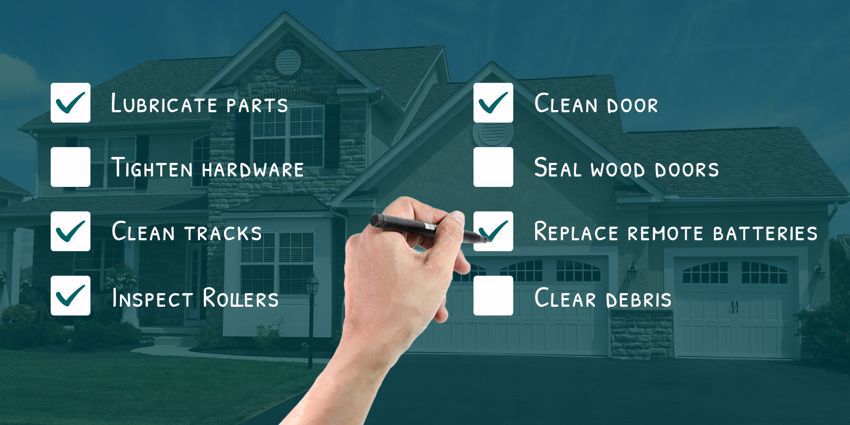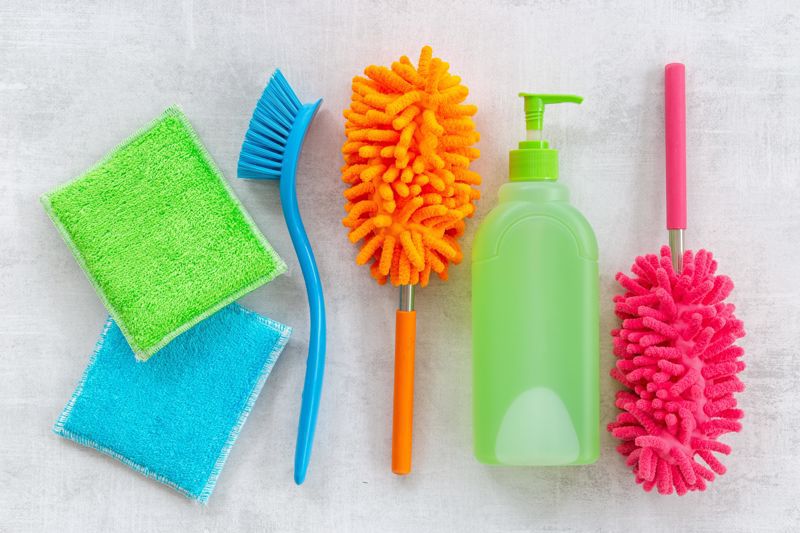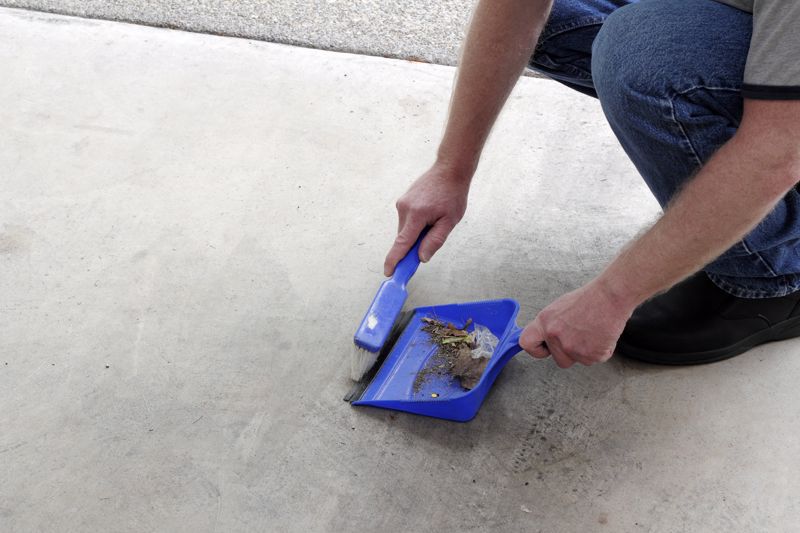Garage Door Maintenance Checklist: How To Care For Your Garage Door
- Oct 7, 2024
- Garage Door Maintenance
- 7 minute read

When was the last time you performed any sort of basic garage door maintenance? If you can't remember, you're probably due for a visual inspection at the very least!
Regular, basic garage door maintenance helps keep your entire system in good working order. Just like anything else, the better you take care of your garage door, the longer it will typically last — and the better it will look.
This homeowner's garage door maintenance checklist highlights eight easy tasks to maintain appearance and functionality.
Why Regular Garage Door Maintenance Matters
Modern garage door systems are pretty robust; however, regular maintenance is a great way to preserve their integrity and appearance for years — decades, even. But if you need a few more good reasons to check up on your garage door now and then, consider the following:
- Enhanced safety: A garage door system has a lot of moving parts. Regular maintenance helps to ensure that all elements, like springs and cables, are in good condition to prevent unnecessary accidents or injuries.
- Longevity: Keeping components clean can help reduce wear and tear — especially if you're frequently in and out of your garage.
- Cost savings: While installing new garage doors delivers the highest return on investment and can increase your home's value, the initial cost can be expensive. Regular maintenance can help you catch small issues early before they result in a more costly repair job.
- Smoother operation: No one wants an excessively noisy or bumpy garage door. Basic maintenance can help ensure smooth and reliable performance.
- Improved security: When your garage door is in good shape and works as expected, it's more secure, which protects your garage and home from criminals who may attempt to gain access.
If your current door is lacking in any of these areas and you're skeptical about whether regular maintenance will improve it, it may be time to consider a replacement.

Faux wood is popular for a reason, as it offers the look of a real wood door with the resilience of solid steel. Oh! And it requires much less upkeep than real wood.
Ready to get started? If you're new to basic garage door maintenance and aren't sure where to start, these eight items are easy-going; but first, safety. Garage doors can be dangerous and even completing basic housekeeping tasks is risky. Before you do anything, please keep these safety precautions in mind:
- Use the manual release safety feature: When working on the door itself, use the manual release to disengage the opener, allowing you to move the door manually without the risk of it suddenly moving.
- Avoid DIY repairs on springs and cables: Garage door springs and cables are under high tension and can cause serious injury if mishandled. So, leave garage door spring repair and replacements to the professionals.
- Wear safety gear: Use appropriate safety gear, such as gloves and safety glasses, to protect your hands and eyes from sharp edges, debris or chemicals.
- Keep hands and fingers clear: Avoid placing your hands or fingers between door panels or near moving parts to prevent pinching or crushing injuries.
- Work in a well-lit, clear area: Ensure your work area is well lit and free from obstructions to prevent trips, falls or accidental bumps.
Another important note to keep in mind is that every garage door is different, so it's always best practice to refer to the owner's manual for warnings and precautions.
Now that you're briefed on garage door safety, it's time to get to upkeep:
1. Lubricate Moving Parts
Lubricating moving parts is especially important to ensure smooth operation and minimal noise — and it's pretty simple. Apply a high-quality garage door lubricant to parts such as the tracks, rollers and hinges to ensure smooth operation. Just watch your fingers!
2. Tighten Hardware
If you have a screwdriver handy, this task takes no time at all. Check and tighten all visible bolts, screws and brackets that may have become loose over time with regular use.
3. Clean the Tracks
Dirt, dust and cobwebs can sometimes find their way into the tracks of the garage door system. Use a damp cloth to clean the tracks and remove any debris or buildup, but avoid lubricating them as you would moving parts, as this can attract more dirt.

A trusty rag dampened with water and a mild detergent or dry microfiber duster are great tools for cleaning out your garage door tracks.
4. Inspect and Clean Rollers
Rollers are responsible for smoothly gliding your garage door open and shut. If they're broken or damaged, they'll cause unnecessary noise and may even stop your door from working properly altogether. Check the rollers for cracks or wear. If they're dirty or have buildup, clean them. If they're damaged, call a garage door technician to replace them!
5. Clean the Door Surface
Pollen, dirt and dust can cake the surface of your garage door. While not detrimental to its operation, it can impact how the front of your home looks (and it's extra noticeable if your garage door is a light color or has windows). If you've just upgraded your garage door, keep it spick and span by washing it with a mild detergent and clean rag to remove dirt and grime.
6. Paint or Seal Wooden Doors
Authentic wooden garage doors are gorgeous, but they're more susceptible to weather damage than steel, for example. If you have a wooden door, it's a good idea to periodically repaint or reseal the surface to protect against weather damage, warping and rot.
7. Replace Batteries In Remotes and Keypads
There's nothing worse than coming home after a long day to discover that the batteries in your garage door opener remote are dead. While you're completing maintenance on the door itself, check the batteries in the remote and the keypad. If they need replacing, replace them. While it can be difficult to know what the current battery life is without a digital display, here are a few signs that it's time for new ones:
- You need to press the button on the garage door opener more than once.
- You notice the effective range on the remote decreasing.
If you suspect that the opener itself is the problem and not just the remote, learn how to troubleshoot and make basic garage door opener repairs.
8. Clear Out Debris Around the Door Base
If your garage door has safety sensors, any loose debris at the base of the door can affect their functionality. Additionally, large debris can prevent the garage door from forming a tight seal on the ground, which may affect energy efficiency. So, whenever you notice debris around the garage, like leaves or small rocks, sweep them away.

Regularly sweeping up loose debris will ensure that nothing gets in the way of your safety sensors or prevents a tight seal.
Garage Door Maintenance Task Guidelines
While there are no hard and fast rules about how often you should complete certain garage door tasks, here are some general guidelines that can help keep your garage door in the best shape possible:
- Visual inspections: Monthly.
- Basic cleaning tasks: About every 3-6 months or whenever you notice debris that needs to be removed.
- Lubricating moving parts: About every 6-12 months, as lube is slick and generally lasts a good while.
Upgrade to a Garage Door Worth Caring For
Keeping up with general maintenance is a large part of what being a homeowner is all about — but don't exclude your garage! If all it needs is a good cleaning, you're golden; but if it's time to replace it, we have your back.

